Few cities around the world have a reputation for grandeur and elegance quite like Vienna. The capital city of Austria is decked out in imperial architecture from a bygone era and has a strong sense of tradition to it. Whether it’s admiring the city’s many palaces or indulging in some coffee and cake, a 3-day trip to Vienna makes for a superb city break. To fully capitalize on your time here, allow this 3-day Vienna itinerary to be your guide and show you the best this city has to offer.
Best Time to Visit Vienna
Having spent so much time in Vienna across each of the seasons, I really think there is no wrong time to visit Vienna. The city changes with the seasons, so you’re bound to see a different side to the city when visiting at different times.
Personally, I think the best time to visit Vienna is the shoulder season either side of summer. Twist my arm and I’d have to go with the spring months of April, May and early June. Nice weather coupled with the trees in bloom means the city is positively bursting with life. Of course, the colors of autumn in late September and October are equally pretty.
Vienna may have some of the best Christmas markets in the world and looks magical in winter, so November through January is quite special too. Unfortunately, summer comes with surprisingly warm weather and major crowds, so it would have to be my least recommended time to visit.
How to Get Around Vienna
When planning your time in Vienna, it will soon become clear that the city is fairly spread out. Many of the attractions are centered around the inner city, but covering the best things to do in Vienna in 3 days will take you right across the city.
That’s why it is so good that Vienna has a world-class public transportation network that can take you practically anywhere. Its network is made up of 6 underground metro lines, plus countless trams and buses that work together quite seamlessly. To navigate the network, download the VOR AnachB app on your phone and it will tell you how to get where you need to go.
Public transport tickets are best bought in advance from stations, as tickets bought aboard trams and buses are slightly more expensive. All modes of transport use the same paper ticket system, which start at a single trip ticket of 2.4€. With 3 days in Vienna, look at a daily or multi-day ticket as you’ll surely use it and it’ll save you money. For more information check out the official ticket guide.
When arriving from Vienna airport, my recommendation is to avoid the expensive CAT train altogether. Instead, buy a regular ticket to your nearest underground stop and take the S7 regional train into the city where you can then connect to the underground.
Accommodation in Vienna
Long a popular tourist destination owing to its culture and history, travelers are spoiled for choice with accommodation choices. Thanks to the city’s comprehensive public transport network, no matter where in the city you stay, reaching Vienna’s spread-out attractions isn’t a problem. So rest easy that you can complete this perfect Vienna travel itinerary regardless of where you stay.
In each district of Vienna, you’ll be able to find the necessary amenities like restaurants, bars and cafes. That being said, most of Vienna’s more famous and high-rated establishments are in the city’s central neighborhoods. Plus, knowing places are just a short walk is always comforting. Neighborhoods that are particularly popular with travelers include the inner city (1st District), Landstrasse (3rd District), Wieden (4th District) and Mariahilf (6th District).
Being a city of such grandstanding, it fits that high-end hotels are in great supply in Vienna. To experience Viennese luxury first-hand, why not stay at the Grand Hotel Wien. With rooms that look like royal residences and several inhouse restaurants, bars and cafes to choose from, you may never want to leave.
Of course, Vienna also has heaps of mid-range hotels and apartments, like the Drei Kronen Hotel Wien City. Right off the Naschmarkt, guests enjoy the modern comfort of the hotel’s rooms and a big breakfast.
Although it isn’t as well-known as a budget destination, Vienna does have some extremely popular hostels. One favorite is Wombat’s City Hostel on Naschmarkt, beloved for its activities, location and fun energy.
If you are backpacker on a budget make sure to also check out our backpacking guide to Vienna.
For more hotel options in Vienna check out Booking.com. They continuously offer the best rates and their custom service is on point. Airbnb is another great option for finding quality accommodation. For recommendations check out our list of the best Airbnbs in Vienna.
The Perfect 3-Day Vienna Itinerary
As a city so packed with history and culture, it’s not possible to pack everything there is to do into a single Vienna itinerary and completely see Vienna in 3 days. But you can make a fair crack at it if you follow this guide to the city.
With this itinerary, you’ll get the chance to see all the great sights found throughout Vienna’s historic inner city, while also exploring some of the city’s palaces and icons a little further out. Since Vienna loves museums, there will be time to take in 1 or 2, as well as a quick half-day trip venturing to the city’s outskirts.
However, before we get to our Vienna itinerary, we just wanted to remind you to purchase travel insurance. You never know what will happen and, trust us, you do not want to get stuck with thousands of dollars in medical bills. As a wise man once said, “If you can’t afford travel insurance, you can’t afford to travel.” So don’t leave home without it.
SafetyWing offers travel insurance for only about $10 a week, making it a no-brainer to get. You can get a quick, non-binding quote below:
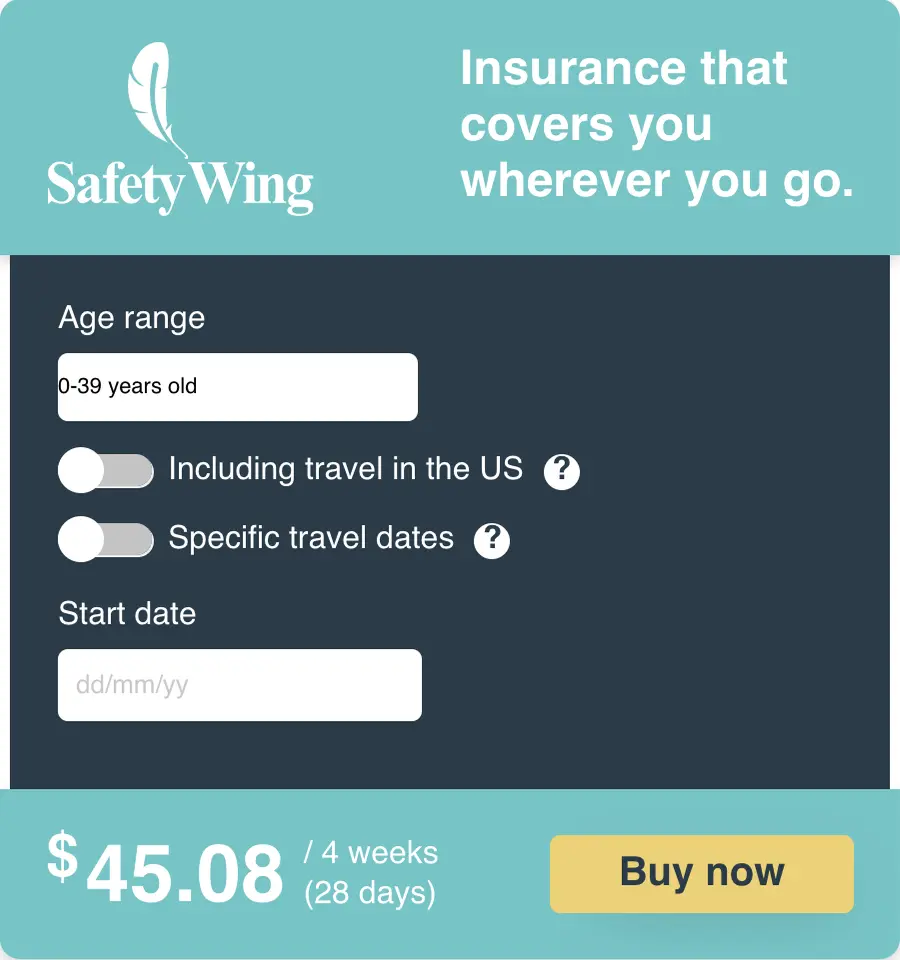
SafetyWing is, of course, not the only option available. Two other popular alternatives are World Nomads and Heymondo.
Now that we’ve got that important trip essential addressed, let’s jump right into the best places to visit in Vienna.
Vienna Itinerary: Day 1
The best of Vienna can be found in and around the inner city, so that is where you will head on your first day in Vienna.
Vienna State Opera
A great place to start your visit is outside the city’s grand opera house. After all, it’s where music and architecture meet, and what could be more Viennese than that. Home to the Vienna State Opera, it’s just one of the city’s many great concert halls.
While it is possible to go on a guided tour of the building or see a performance, the opera house also often hosts free live performances outside in the summer.
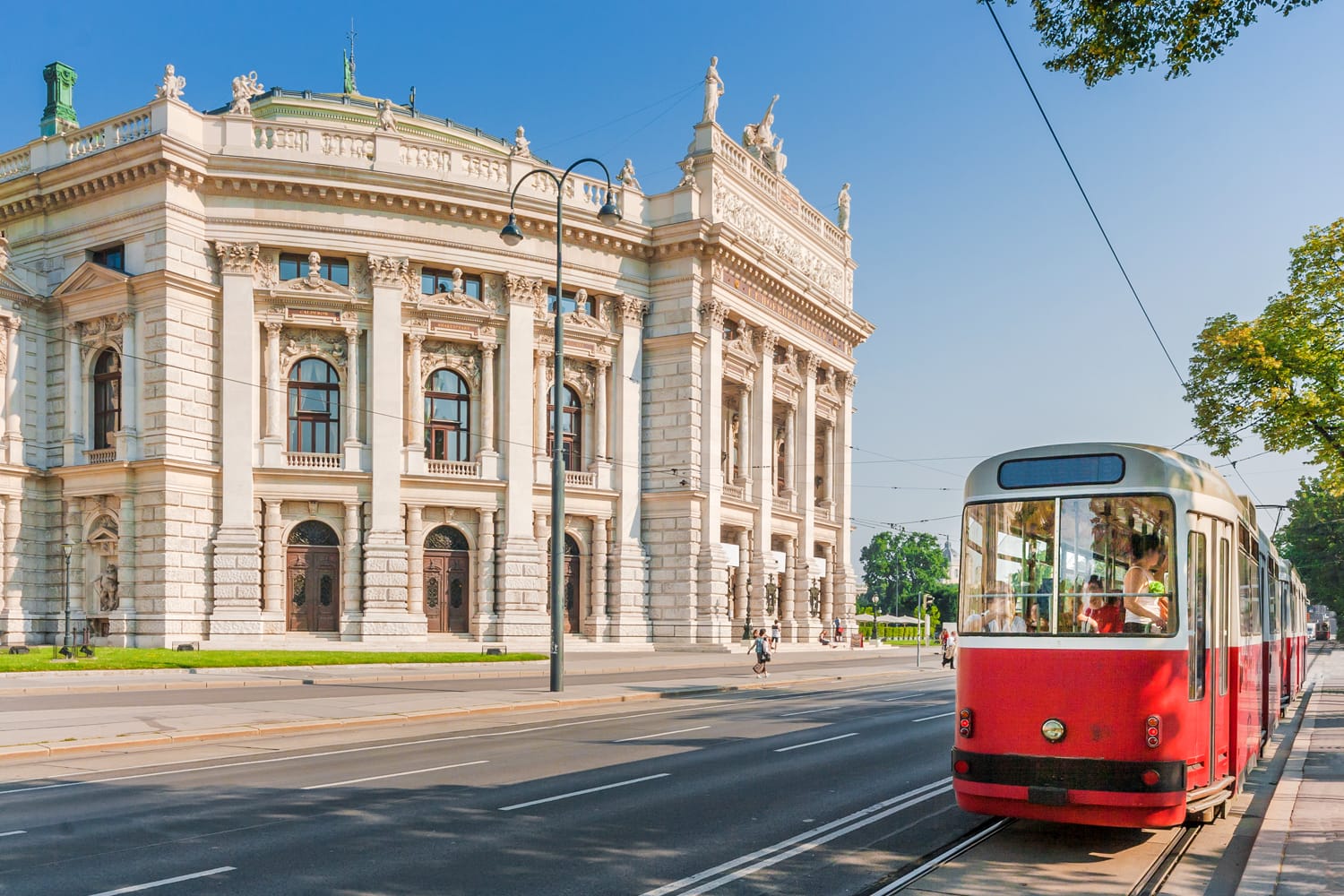
Stephansdom
Right in the heart of the city sits one of Vienna’s most important and iconic landmarks, the Stephansdom. Also known in English as St. Stephen’s Cathedral, this 14th-century building is best known for its steep roof, covered in intricate and colorful tile patterns.
While it’s possible to get a brief look inside for free, visiting the full cathedral, the catacombs, the roof or climbing either of its towers comes with an entrance fee – tickets can be purchased here. It’s worth walking a lap around the cathedral to spot the ornate sculptures and shrines at its rear. This is also a good place to go if you’re looking for one of the city’s cherished horse-drawn carriages.
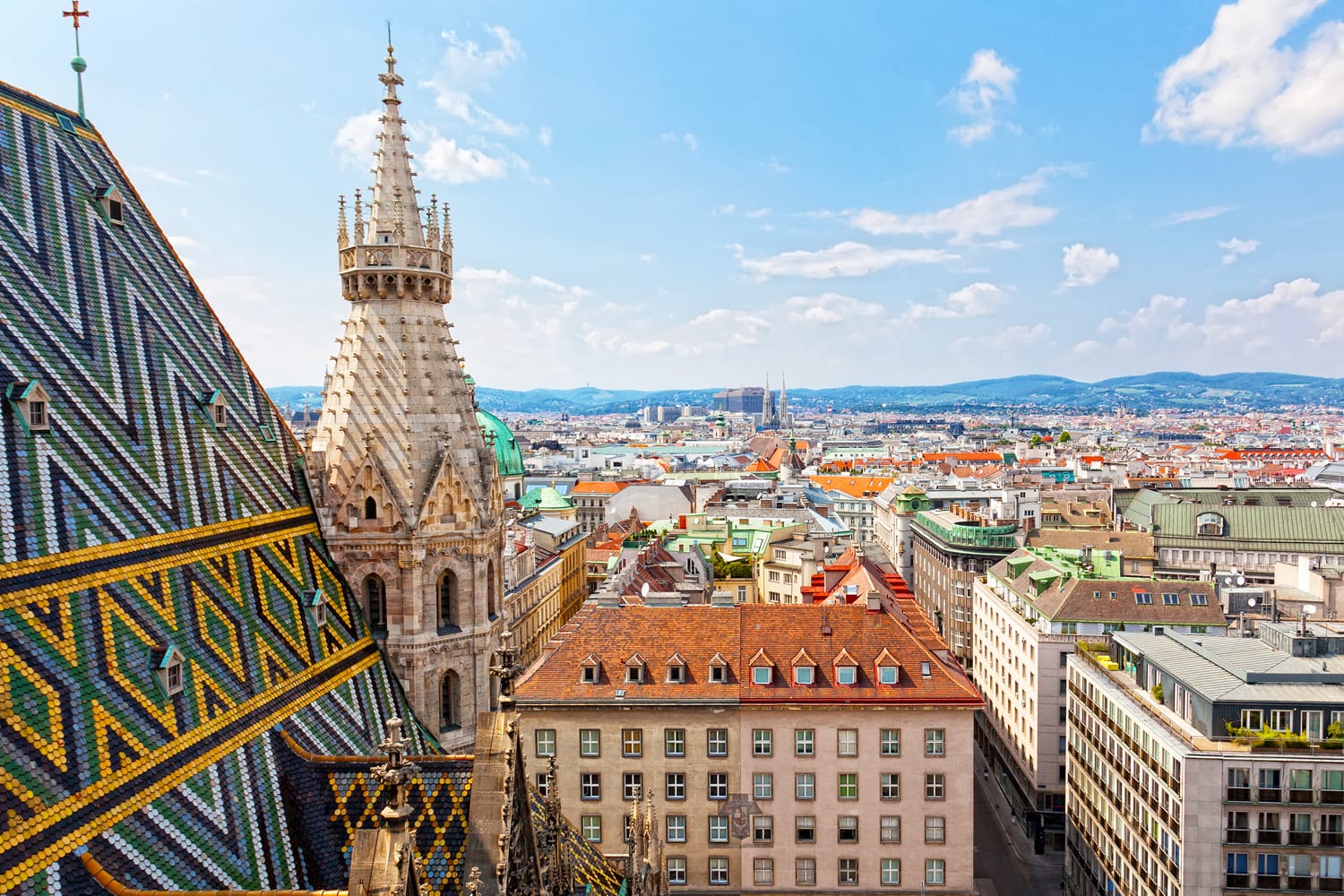
Graben
The centre of Vienna has several busy pedestrian streets at its core, but certainly the most popular pedestrian street is the Graben. Leading away from Stephansdom, this street was once a trench that ran along the old Roman town. Today though, it’s lined with plenty of picturesque buildings like the St. Peter’s Church and the glinting gold of its statuesque Trinity Column.
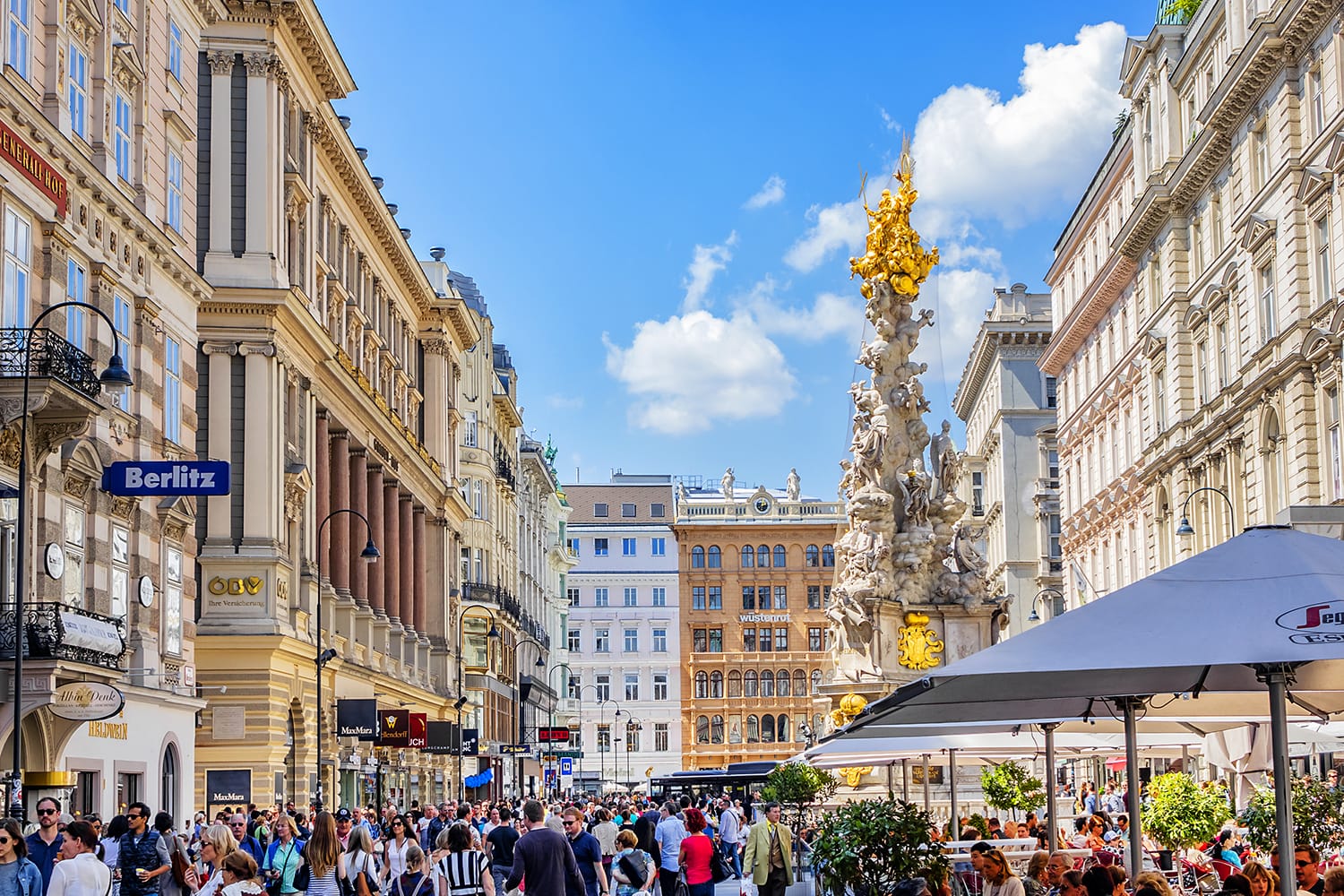
Michaelerplatz
Following Kohlmarkt, another pedestrian street known for its high-end shopping, you’ll reach Michaelerplatz. This lively square may just be a perfect distillation of Vienna, as it seems to be surrounded by nearly every important element of the city.
One side of this scenic square is taken up by an entrance to the Hofburg Palace, between mighty fountain statues. Then there’s the St Michael’s Church, an elegant 20th-century building, and the historic Café Klimt. Plus, right in the middle of it all are some exposed ruins from Old Vienna.
Cafe Central
One of the absolute musts on a trip to Vienna is sitting down in a Viennese coffee house for some coffee and cake. While there are plenty of places to go for this in Vienna, it’s hard to beat Café Central. A classic example of a Viennese café, here your waiters are finely dressed and your coffee is brought out on metal trays, as it should be in Vienna.
Ferstel Passage
Through the many grand old houses and palaces in Vienna’s historic centre you’ll find half-hidden passageways. One of the most attractive passages in the city has to be the Ferstel Passage, an ornate and hidden passage that passes through the Ferstel Palace.
With an elegant fountain and magnificent arcade, the Ferstel Palace may be the most beautiful spot in Vienna that’s free to visit. After seeing this magical passage, you may feel an overwhelming desire to go and hunt down other hidden passages throughout the city.
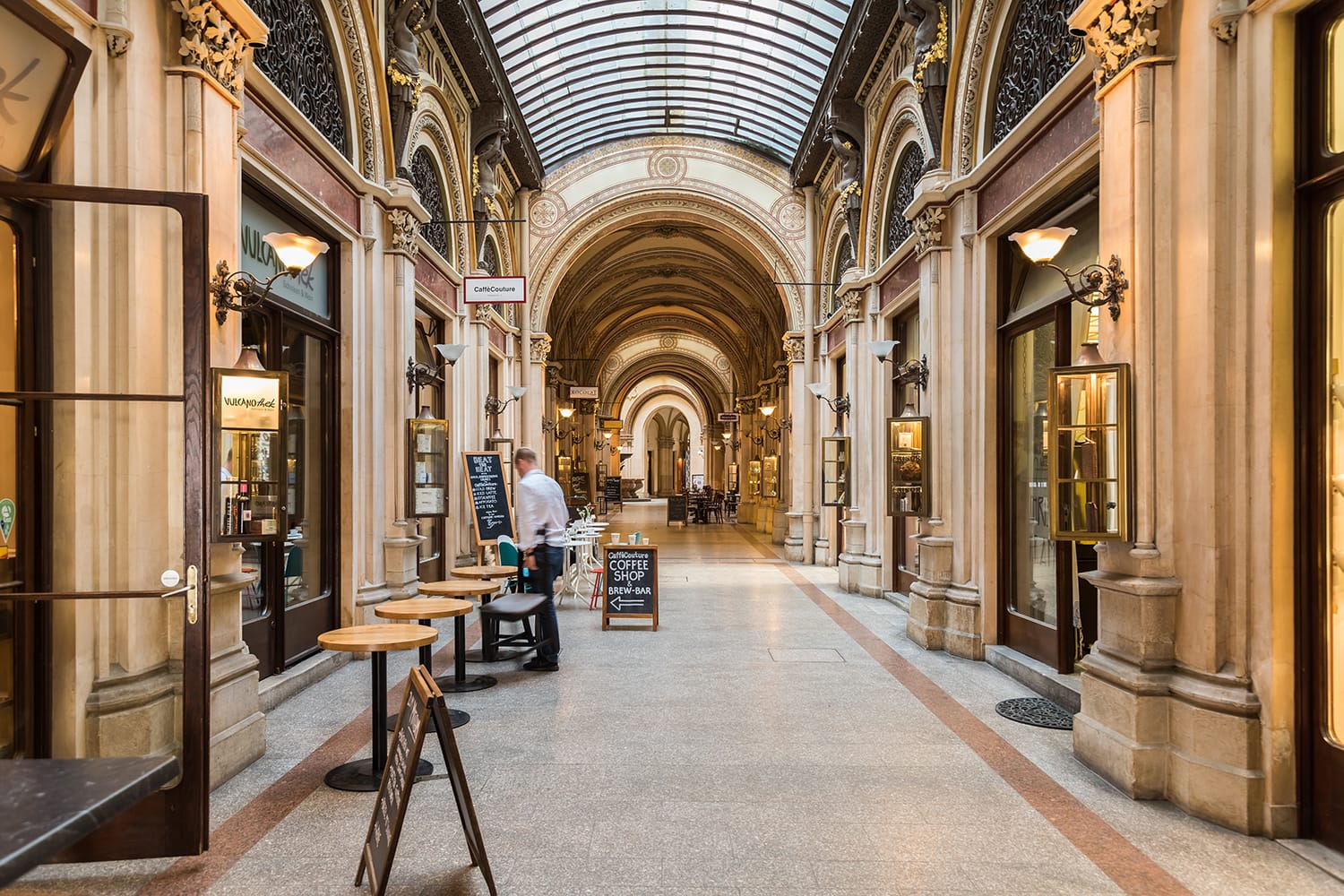
Hofburg Palace
Among Vienna’s many palaces, the Hofburg Palace is kind of the big one. This was the main imperial palace for the Habsburg royal family through the centuries. Today it is, among other things, the residence of the Austrian president.
Entering from Michaelerplatz, you first pass through a large courtyard featuring a large statue dedicated to Kaiser Franz I. While there are a few connecting passages and courtyards around the palace complex, the other big spot is the large square of Heldenplatz. Here is where you find the main view of the palace wings, giant statues and, at the moment, the temporary parliament.
It’s worth pointing out that there are some nice gardens a short walk in either direction from here. On the far side of the Hofburg Palace lies the Burggarten with its greenhouse and pond. Alternatively, just off Heldenplatz lies the floral Volksgarten, which is at its prime in spring.
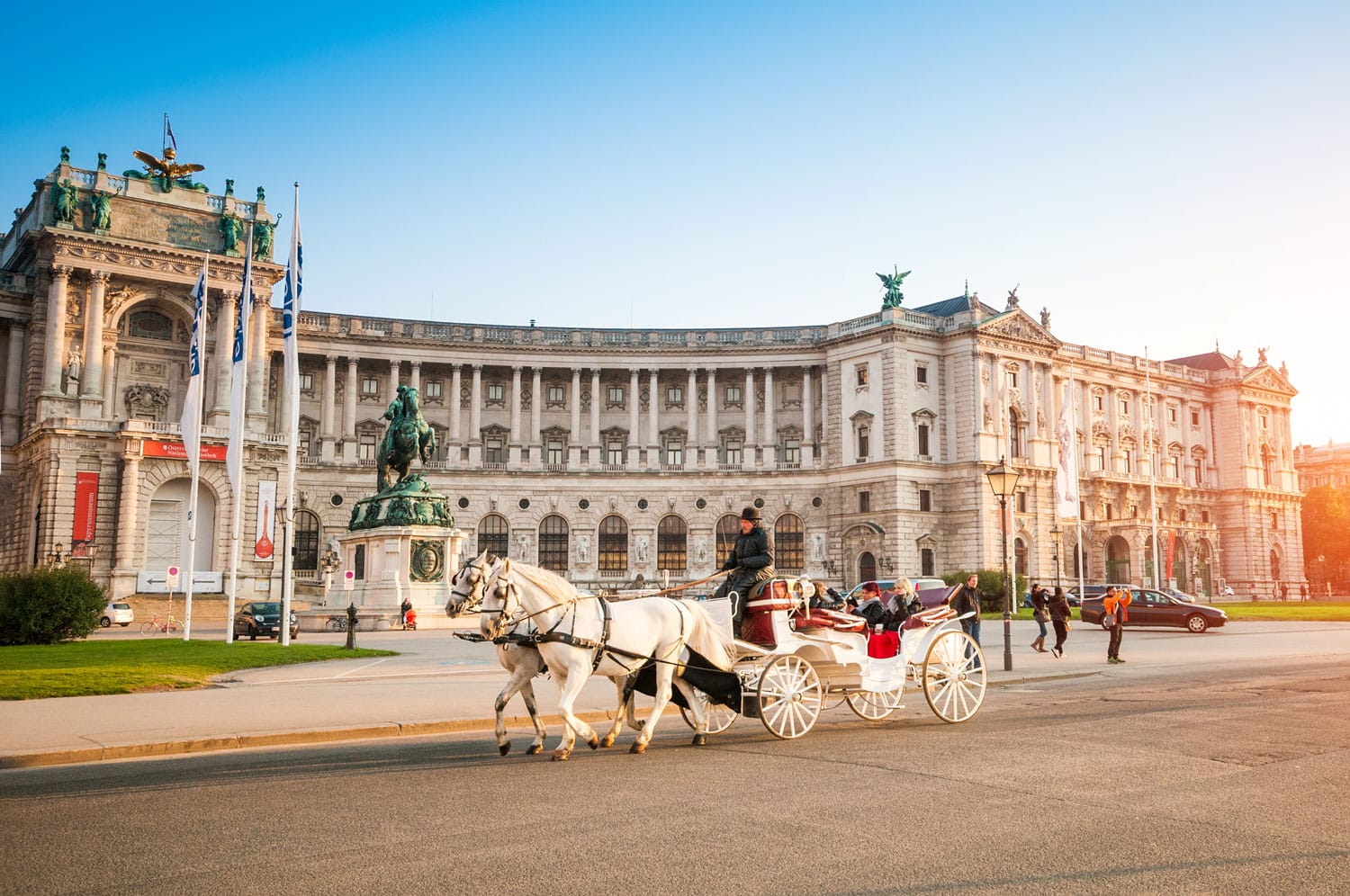
Vienna Rathaus
Of Vienna’s many stately buildings, few make quite the impact that the Vienna Rathaus does. The city hall of Vienna, its Gothic style is a little out of the ordinary for the city, but it really is quite the sight. Out in front of the Rathaus, there’s nearly always some sort of market or festival, depending on the time of year. For instance, in winter it has a long and winding ice rink track in the park around the central Christmas market there.
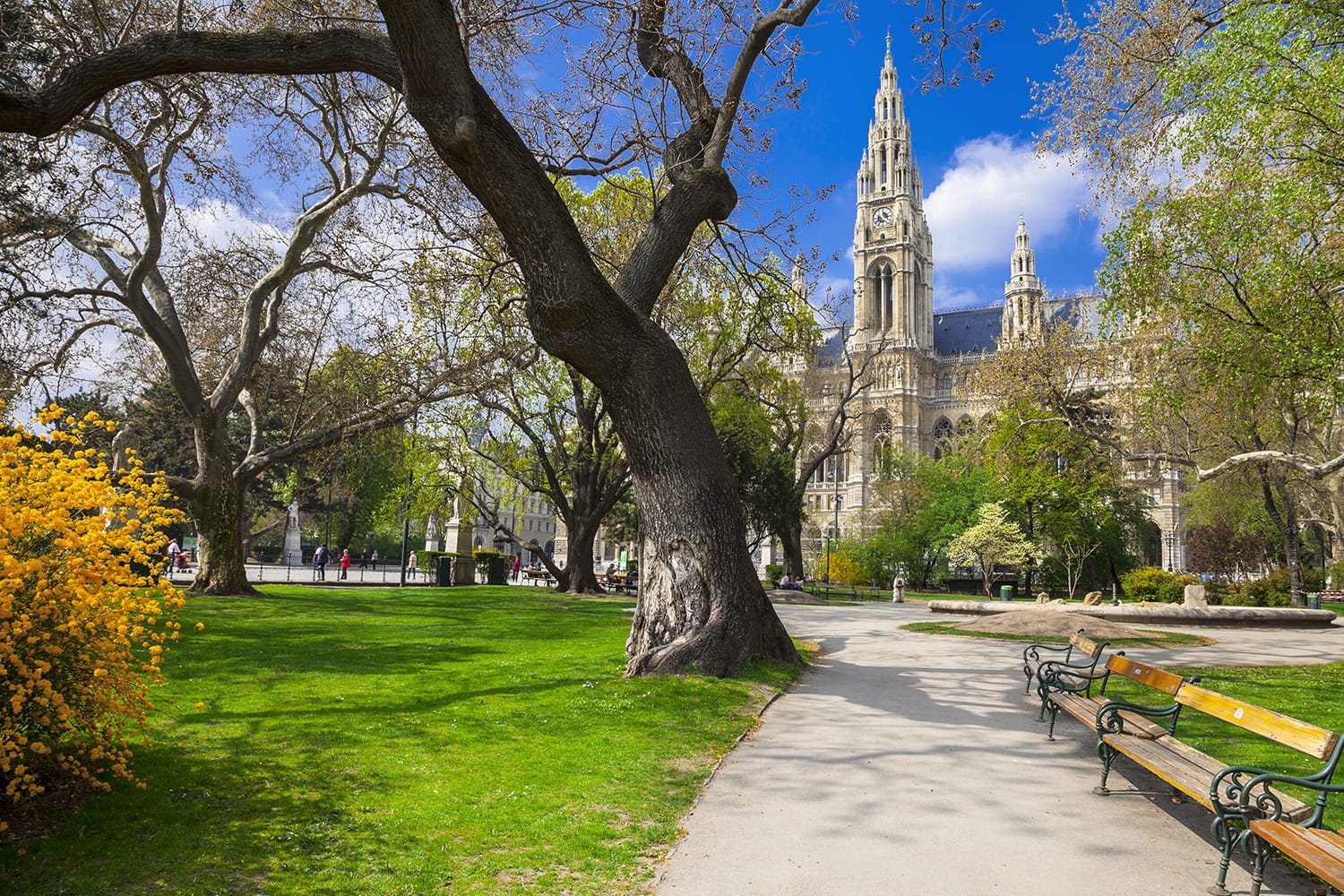
Dinner in a Beisl
You’re sure to be keen to experience some traditional Austrian cuisine during your visit. The best way to do this is to visit a typical Viennese beisl, essentially a traditional local tavern. At beisls you can indulge in local meals like schnitzel, sausages or roasted meat with dumplings. While there are many throughout the city, Reinthaler’s Beisl just off Graben is one I often recommend.
Vienna Itinerary: Day 2
Rather than sticking just to Vienna’s inner city, today you’ll venture out into other districts and see some of the city’s best palaces and parks.
Schönbrunn Palace
When it comes to the height of elegance in Vienna, it’s hard to go past the royal splendor of Schönbrunn Palace. Found out in the suburbs of Vienna, this colossal baroque palace was once a summer residence of the imperial family. These days it delights visitors with its lavish residential rooms and extensive palace gardens.
Taking a tour inside is an absolute must, as you get taken through more than 20 rooms, including the private rooms of Franz Joseph and Sisi. Out in the gardens, I recommend walking up to the Gloriette for a really memorable view.
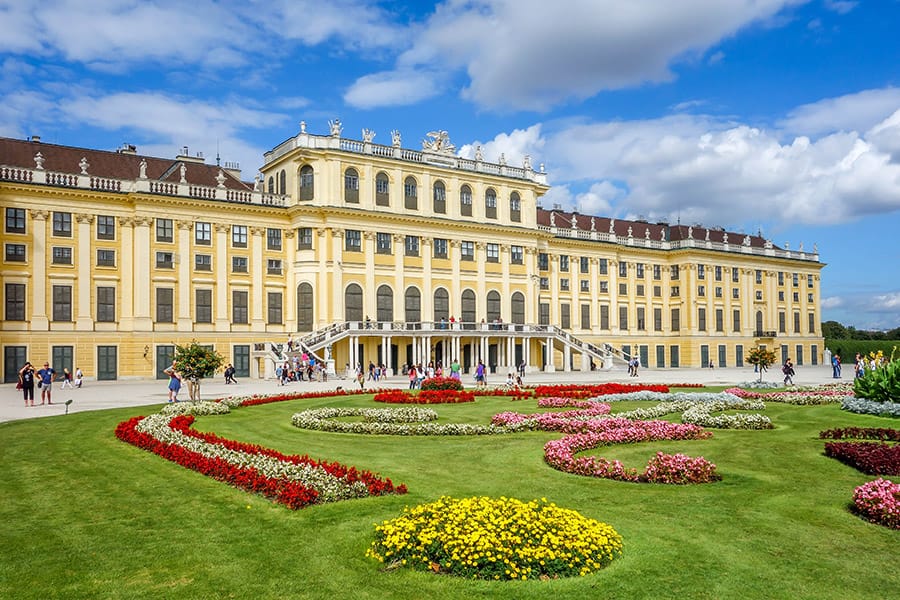
Naschmarkt
If markets are your thing, then the one to visit in Vienna is the Naschmarkt. This long outdoor market has been going strong for centuries and has a little of everything. Between the various cafes, bars and restaurants you’ll find plenty of stalls selling lots of middle eastern spices, eastern European foods, fresh produce etc.
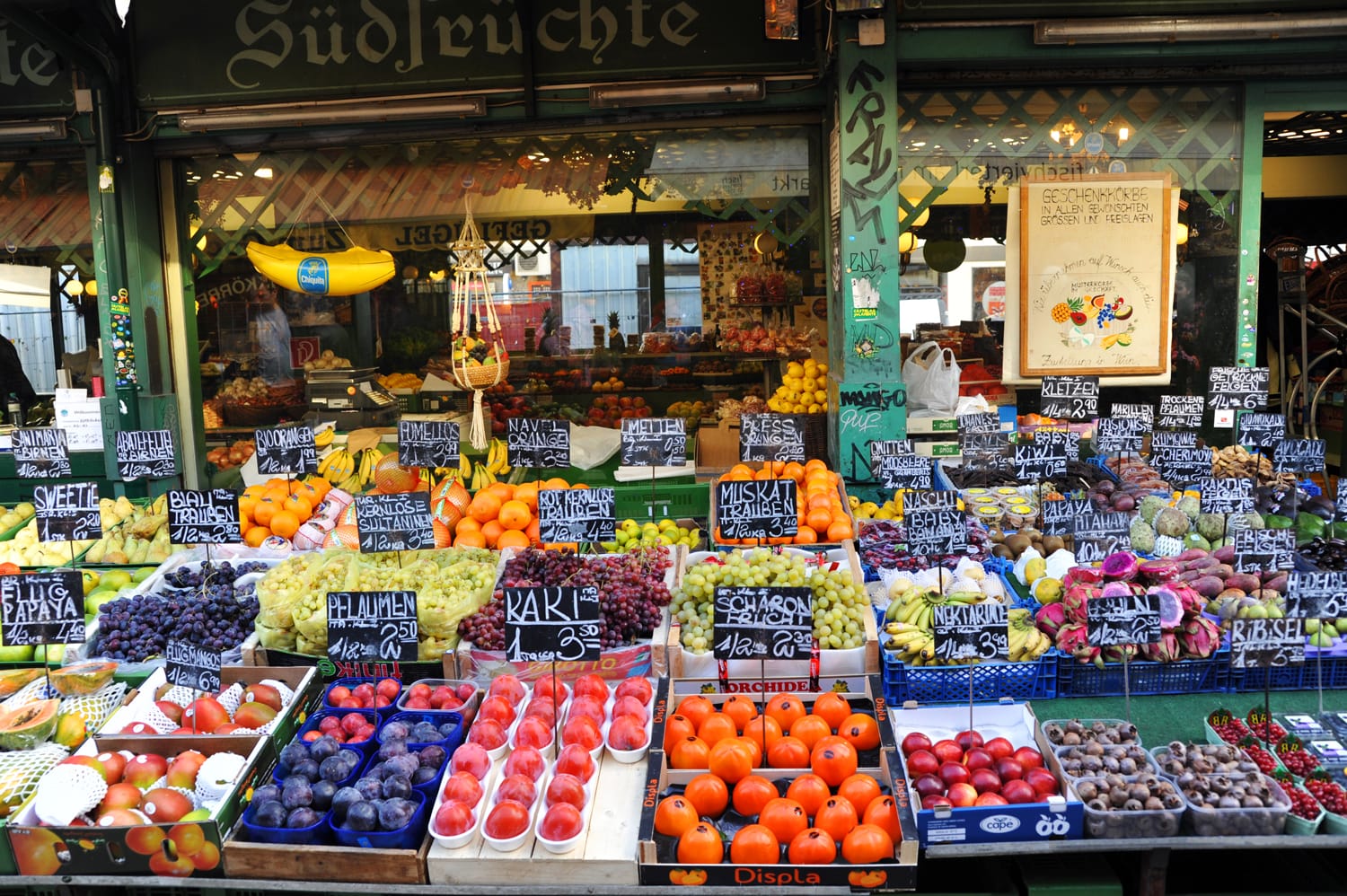
Karlsplatz
A short walk from the Naschmarkt brings you to another important square and church of Vienna in Karlsplatz. This lively square outside the technical university is dominated by the magnificent Karlskirche. A baroque church from the 18th century, Karlskirche is a true landmark of the city with its unusual look and exquisite twin carved spiral columns. Sitting by a reflecting pool, you’ll want your travel camera ready here.
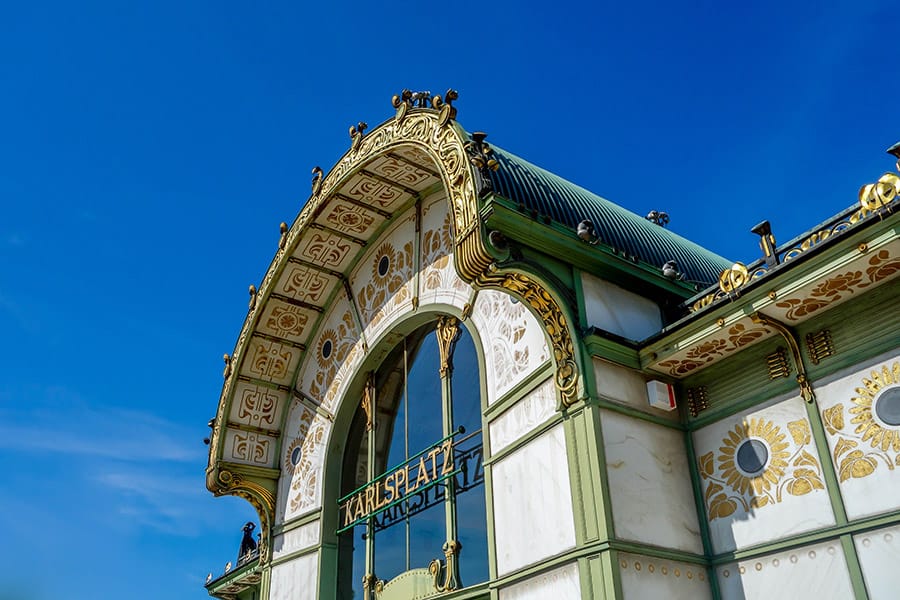
Belvedere Palace
A little overshadowed by Schönbrunn and the Hofburg, the Belvedere Palace would be a headliner in any other city. Sitting on a slight hill, the palace enjoys views across the city as you look down over the intricate palace gardens that flow down the hill.
With manicured gardens, expressive fountain statues and the palace to admire, you don’t even have to head inside to be impressed here. With free entrance to the gardens, there’s no reason not to visit this spot.
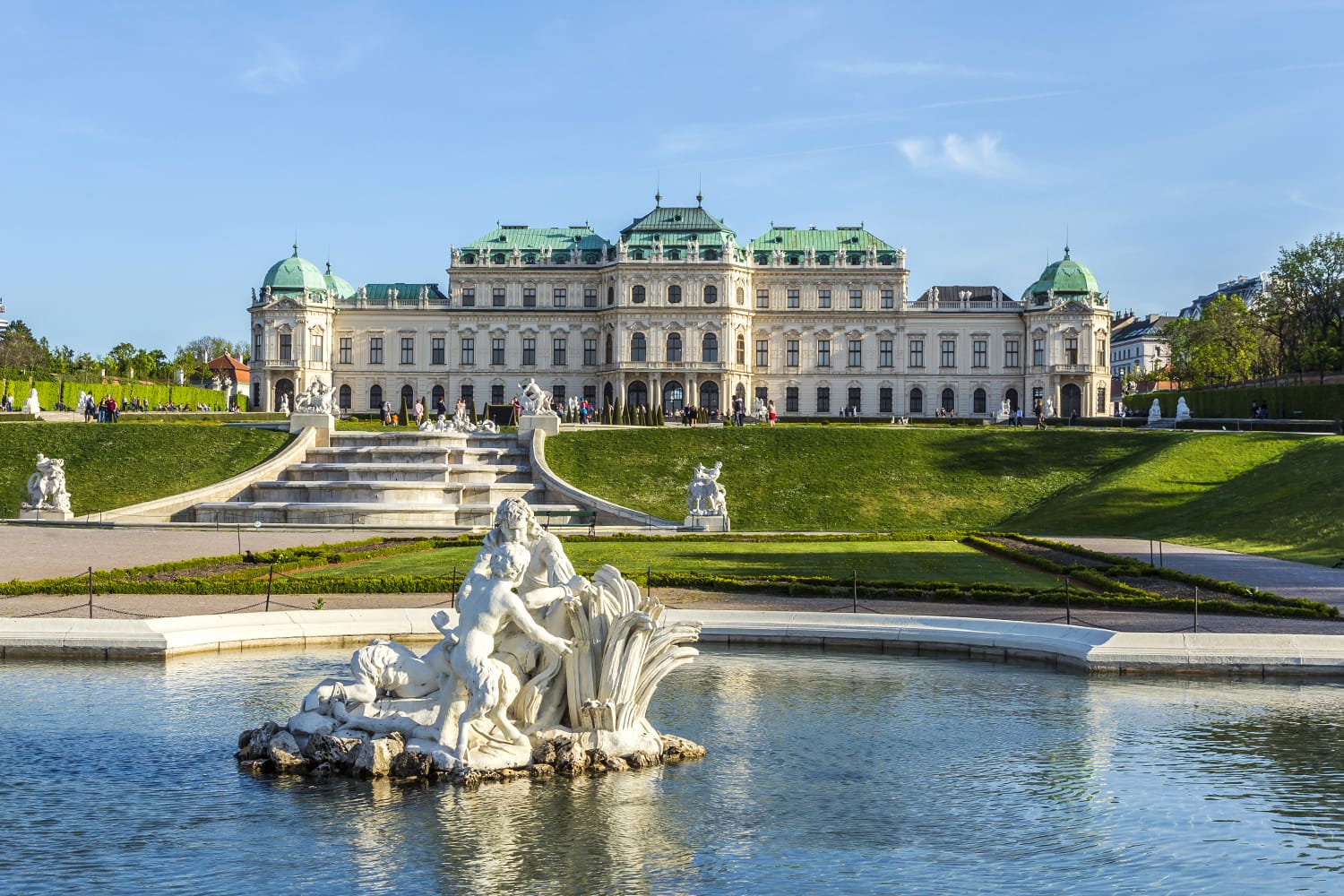
Stadt Park
Vienna is a city that likes its parks, with people flocking to them during the warmer months for fresh air and sunshine. One of its more popular is the Stadt Park just outside the inner city. With great wide lawns, a pond and plenty of seats, it’s rare to see the park empty. Separated in two halves by the trickle of the Vienna River, one half is mostly sporting courts and playgrounds. For visitors, the most popular spot here is the golden statue of musician Johann Strauß.
Hundertwasser House
If you think that Vienna’s look and architecture are all the same, then you’re in for a surprise. Just one moment outside the funky, trippy building that is the Hundertwasser House will have you changing your tune. Designed by Vienna native and famed architect Friedensreich Hundertwasser, this is the most popular of his expressionist buildings found in Vienna.
It’s hard to describe with words what to expect from this building as it has a habit of breaking the rules. And while this is his most famous building, there are others to be found around the city like the Hundertwasser Art Museum.
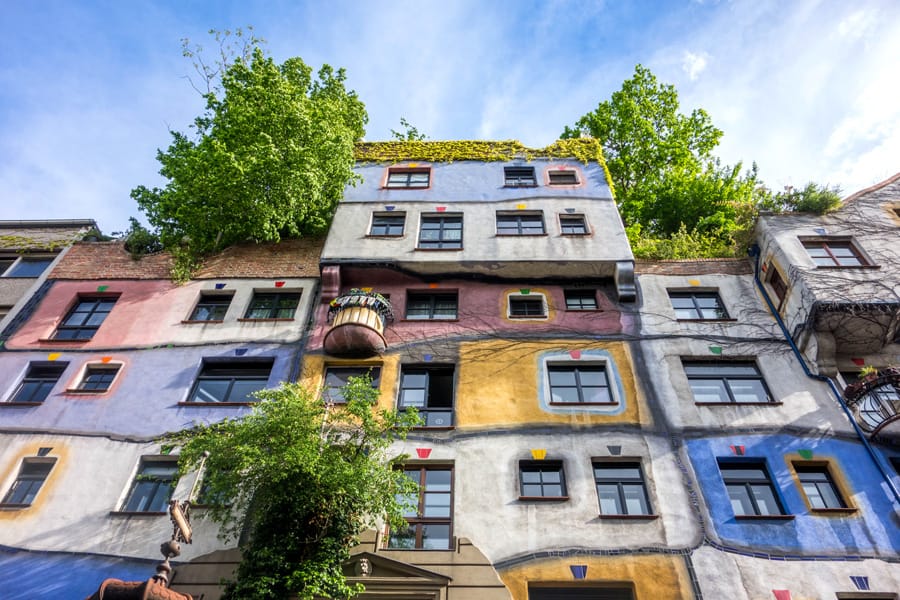
Prater Park
Once the royal hunting grounds, the Prater has transitioned today into a mammoth park. Stretching miles, it has everything from woods to a beer garden and even a miniature railway. For many visitors though, the main attraction here is the Prater Amusement Park.
Inside you’ll find various rides, a Madame Tussauds wax museum and plenty of places to eat and drink. All of this centres on the giant Vienna Riesenrad ferris wheel. Dating back to 1945, this ride is most famous for being a setting for the film The Third Man.
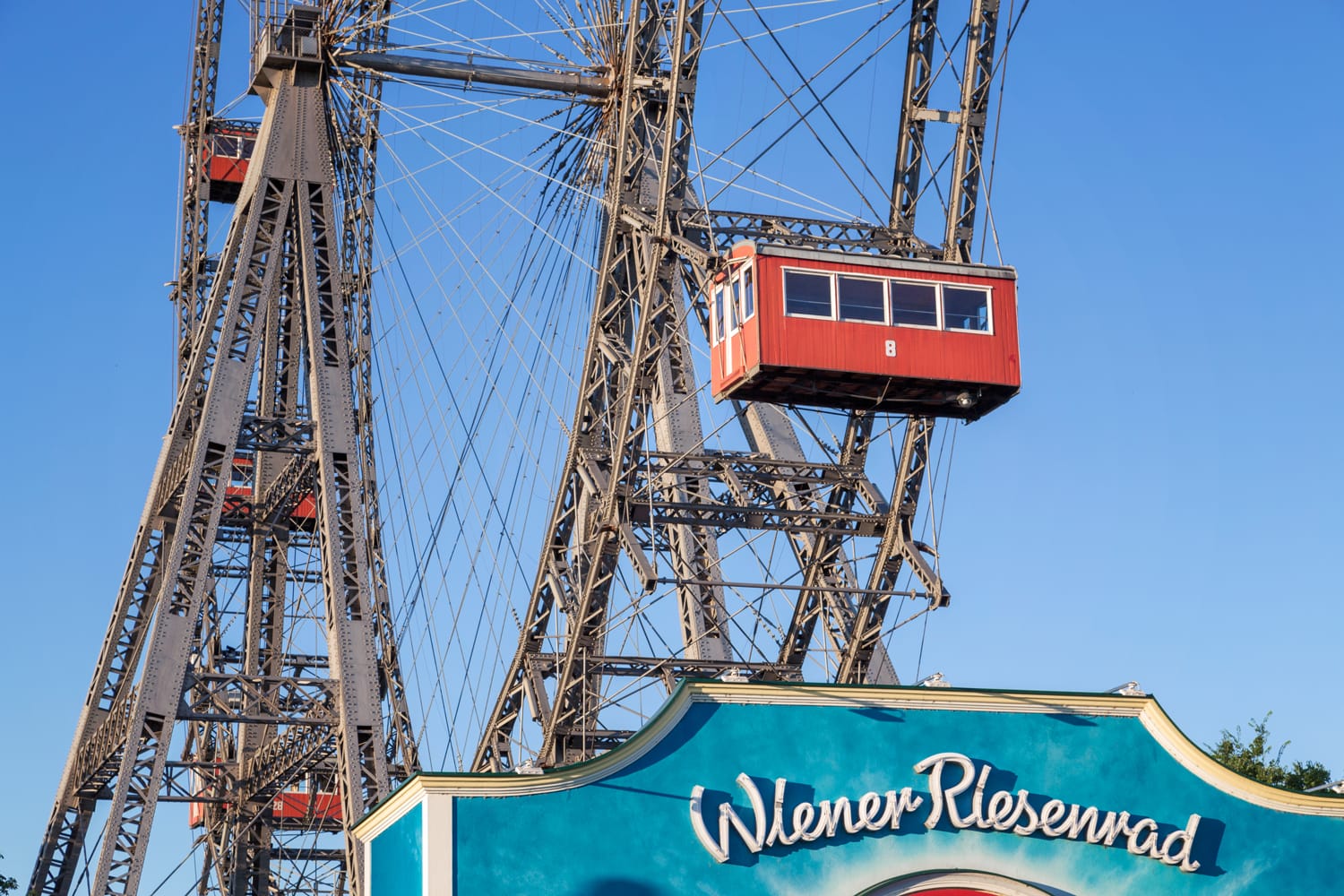
Goulash Museum
Dinner at a museum you say? Well, it’s not exactly the type of museum you’re thinking of. In fact, it’s more of a restaurant, but the goulash part is definitely accurate. Here at the Goulash Museum you can try all sorts of different goulash, from the traditional to the frankly weird, including even a chocolate dessert goulash. And yes, while goulash is technically Hungarian, it’s also become an Austrian favorite, what with the Austrian Empire and all.
Evening Concert
With such strong musical pedigree, you can’t miss the opportunity to catch a concert when visiting Vienna. Home to a surprising number of music venues and theatres, there are always concerts going on in Vienna. From the Vienna State Opera to the Concert House and the Musikverein, it’s worth doing a little research in advance to see what might be playing.
Here are some suggestions:
- Mozart & Strauss Concert in Kursalon Vienna
- Vivaldi’s Four Seasons in Karlskirche
- Vienna Hofburg Orchestra in Hofburg Palace
- Vienna Mozart Concert at the Golden Hall
Vienna Itinerary: Day 3
Although Vienna is a great city to make day trips from, let’s spend a little more time in the city and see some of its immediate surroundings with a short half-day trip.
Vienna’s Museums
Vienna is a cultural behemoth and is seriously jam-packed with museums and art galleries touching on everything. While visiting all of them would take way longer than 3 days, not to mention be super expensive, you do have time to fit in at least one.
1. Austrian National Library
Europe has many beautiful libraries to visit and I’d say that the Austrian National Library is certainly one of them. A visit to the library’s State Hall takes you into a vast room lined with marble floors, frescoed ceilings and grand wooden bookshelves. Then there are all the sculptures, antique globes and display cases to appreciate. Separate from the hall is the Literature Museum where you can learn about Austrian literature.
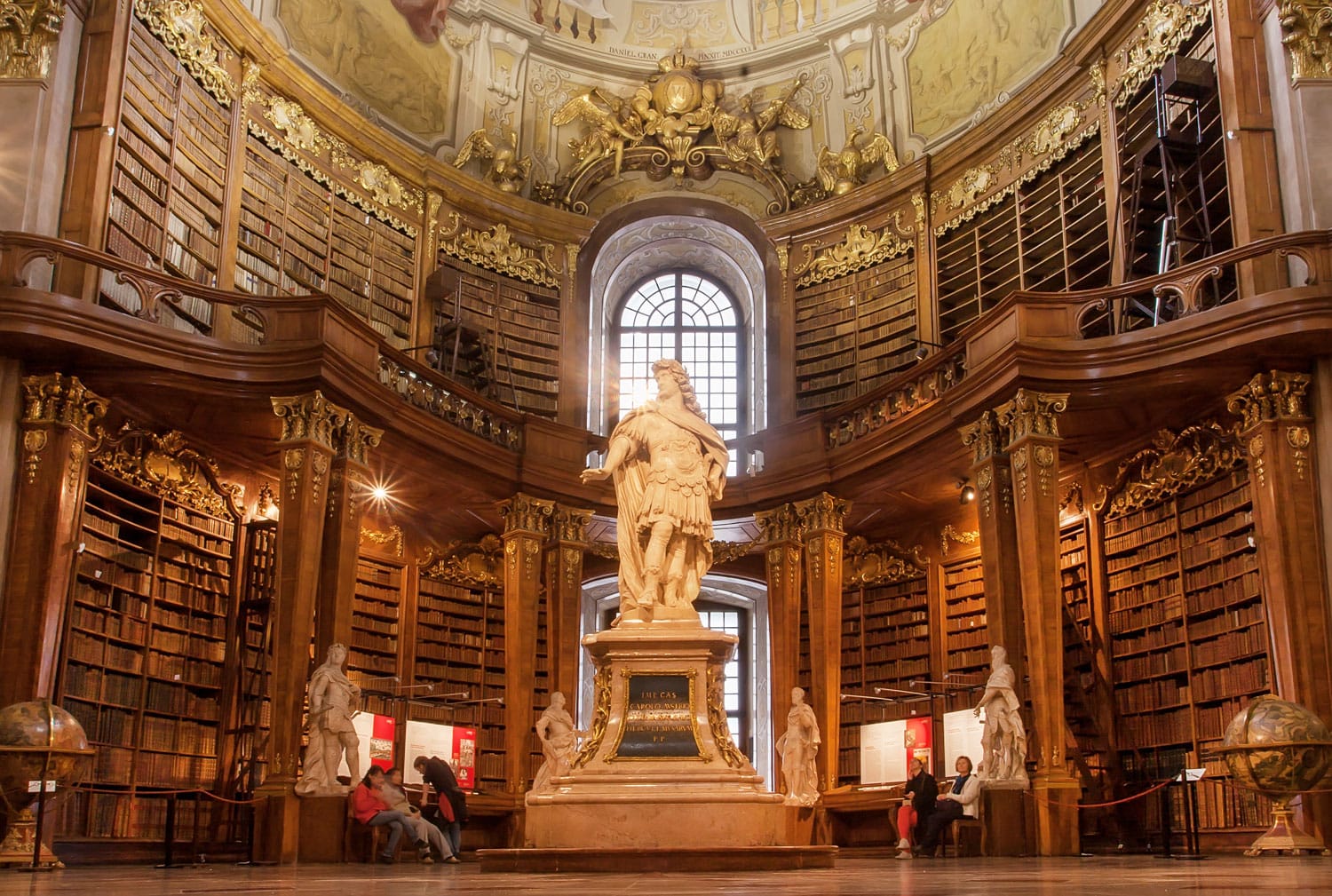
2. Imperial Treasury
You’d expect a longstanding empire like the Austrian Empire to have collected its fair share of riches. Well they did, and those riches are on display in the Imperial Treasury at the Hofburg Palace. Centuries worth of royal and religious items can be seen here, from royal crowns to a bowl that was once thought to be the Holy Grail itself.
3. Mozart’s House
Vienna has a fondness for preserving places where its most famous artists lived. Of the many you can visit, probably the best is the Mozarthaus. This refurbished apartment in the heart of Vienna is where Mozart and his family resided for 3 years. Now a museum, here you can learn about his lifestyle and work, as well as gain an appreciation for what a Viennese apartment was like in the 18th century.
4. Albertina
For those with any interest in art, I can’t recommend the Albertina Museum enough. Housed in a palace (of course) this world-class art museum always has something new to offer. Its permanent exhibitions balance pieces by Austrian artists with plenty of international works of art. And no, that doesn’t mean a single Picasso, but multiple works of his, and those of Degas, Cezanne and Chagall. Plus, their temporary exhibitions always seem to be dedicated to only the biggest names in art, from Munch to Monet to Warhol.
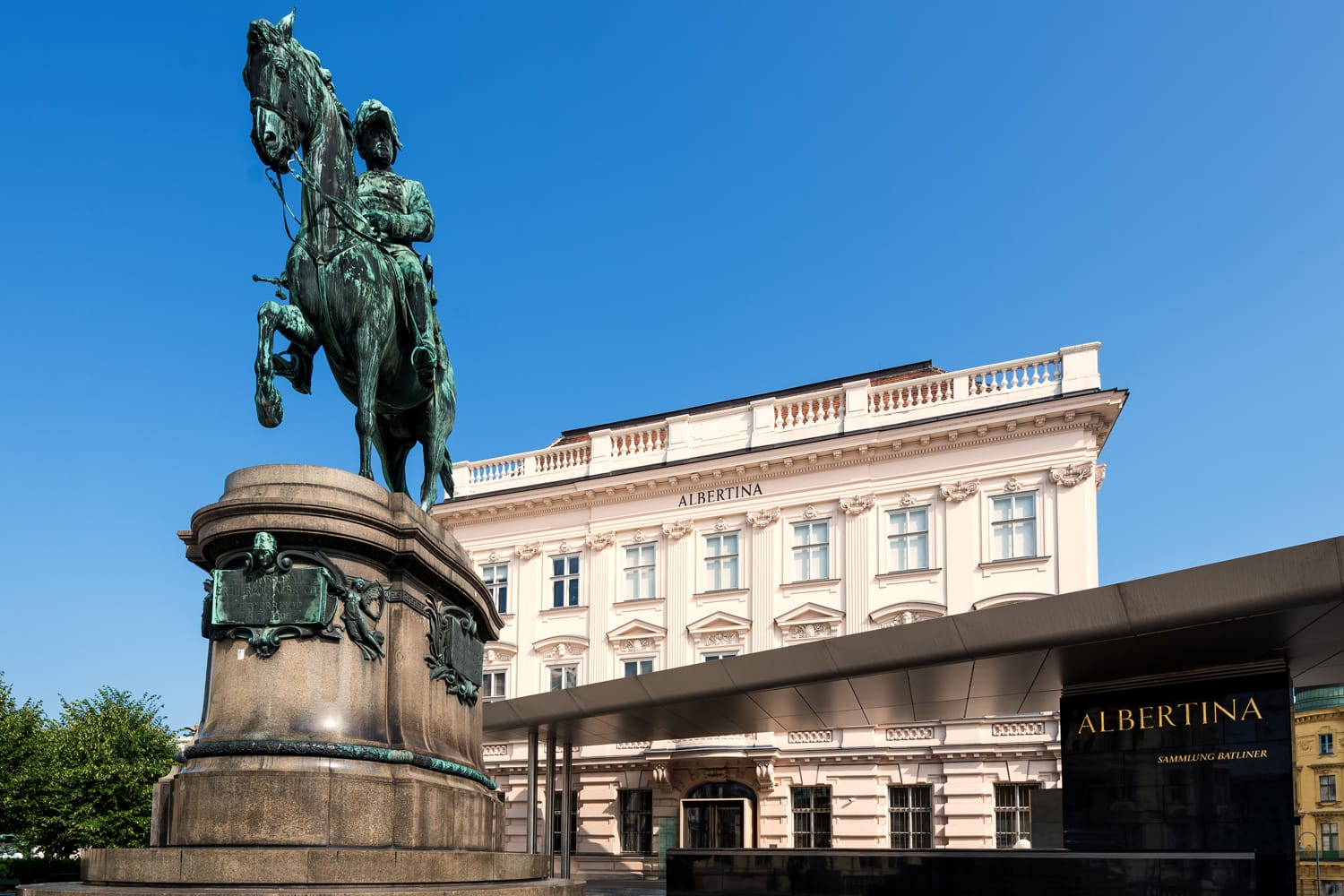
Half-Day Trips
Even though there are quite a few good domestic and international day trips from Vienna, you really don’t have to go that far to see something special.
1. Grinzing
Interested in Vienna’s wine scene? Then a visit to the outer neighborhood of Grinzing is a must. Found at the bottom of the Vienna hills, this is where you find many of Vienna’s local wineries. Grinzing itself is home to some pretty buildings, but its big draw is the many heurigen found there.
Heurigens are basically small taverns, often with large outdoor areas, that serve the wines of the neighboring vineyards. I bet you can imagine how popular this part of the city is in the warmer months, especially on weekends.
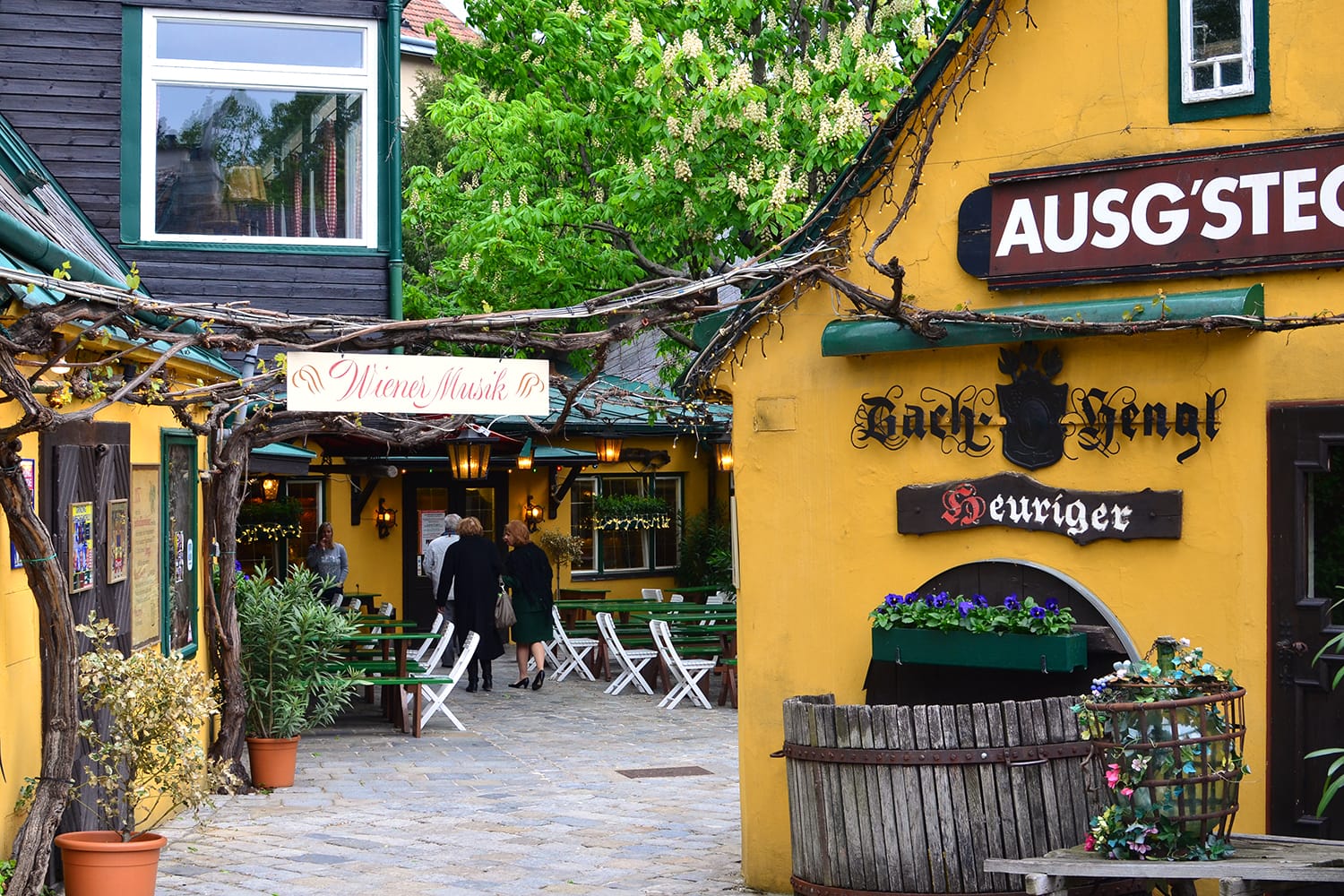
2. Kahlenberg
While you can find a few nice vantage points to admire in the city of Vienna, to see the entire city head to Kahlenberg. One of the hills that overlooks the city, the view from Kahlenberg lets you look out over not just Vienna but the beautiful Danube river as well. You’re also positioned right above the vineyards outside Grinzing, making for one compelling panorama.
The viewing terraces here and at nearby Leopoldsberg are quite popular on weekends and are at their best with cooler weather, as there’s less haze. Besides the view, Kahlenberg is historically important as it’s the place from which the Polish forces came to Vienna’s rescue against the Turks in 1683.
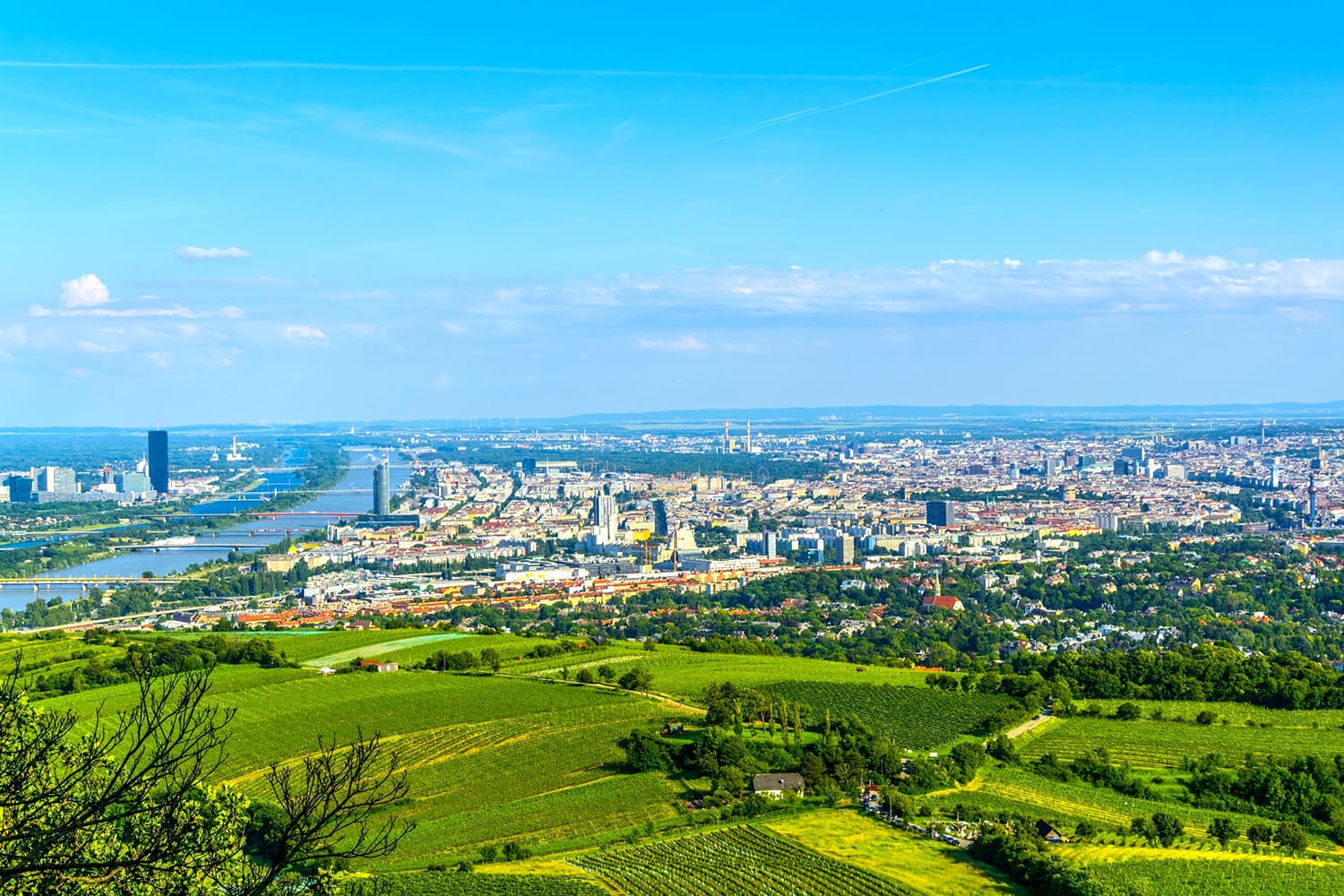
3. Laxenburg
If you still haven’t had your fill of palaces yet, then a trip to Laxenburg is in order. Once a royal retreat dating back to the 14th century, it’s now a giant park open to the public. The grounds of Laxenburg are a beautiful place to stroll about, with its lakes and woods. They also act as a venue for various events and festivals, even being the site of a jousting tournament each September.
While the Old Castle of Laxenburg is a rather humble building, the same can’t be said for the castle of Franzensburg. Sitting by the lake, this is a truly charming castle that few foreign guests get to see. Inside the 18th-century castle you can find a museum and café to break up your stroll around the rest of the park.
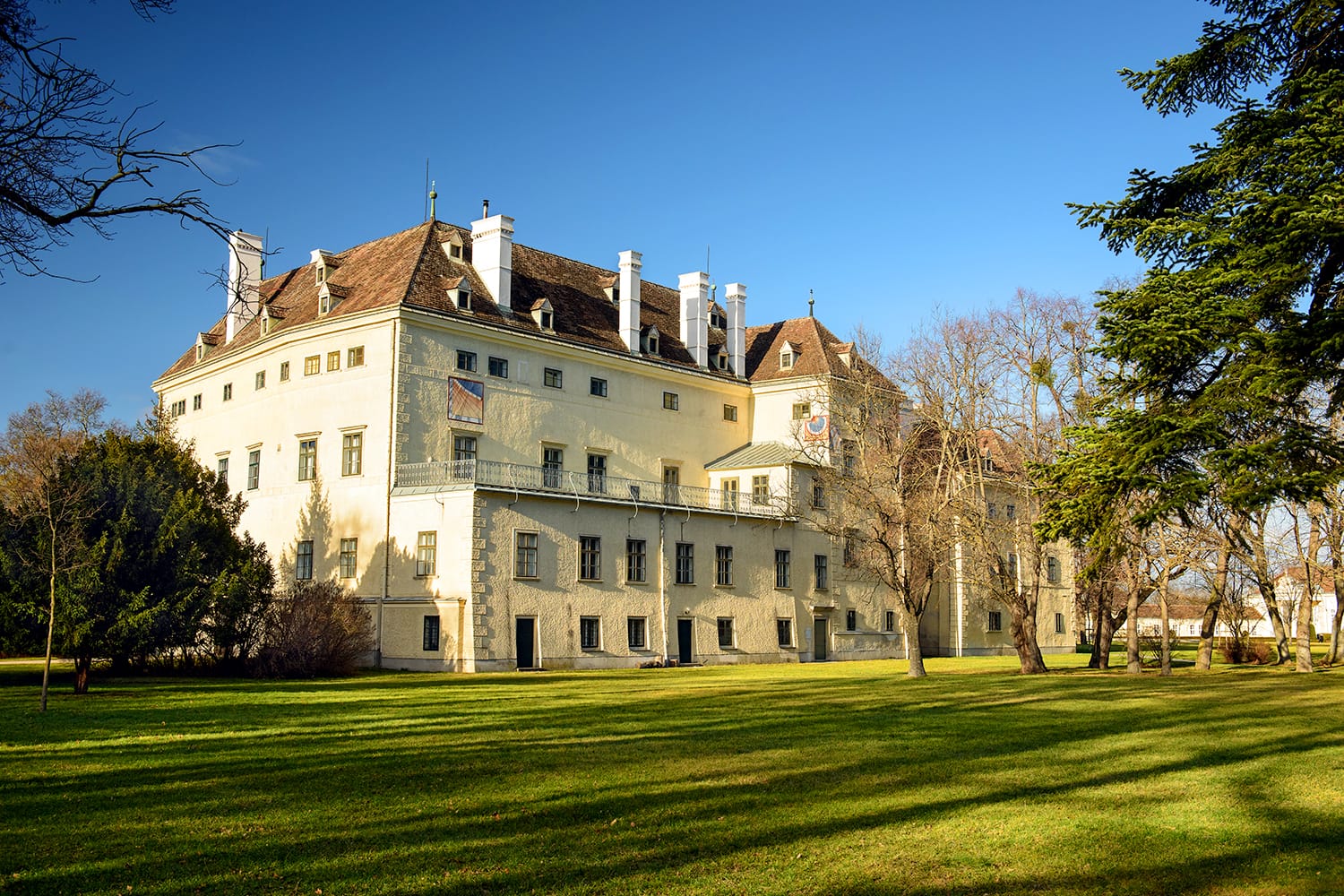
4. Baden bei Wien
Vienna and classical music go hand in hand, with many composers and musicians calling the city home at one point or another. But when they grew tired of city life and needed inspiration, they went to the small town of Baden bei Wien.
Nestled at the edge of the Vienna woods, Baden is both charming and peaceful. In the town centre, it’s far too easy to find plaques recounting which musicians vacationed where in town, including Mozart, Beethoven and more. Then there’s the gardens at Kurpark, which transition from nice formal gardens to gentle forest trails.
Also, given the town’s name translates as “baths”, it’s hardly a surprise that you can find thermal springs here to soak away your stress. Not a bad way to cap off a city break, right?
I think you’ll agree that armed with the above Vienna itinerary, you now have a great idea of what to do in Vienna in 3 days.

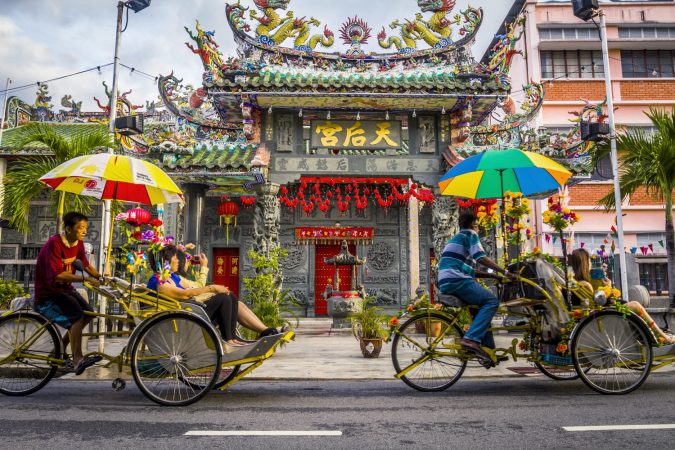
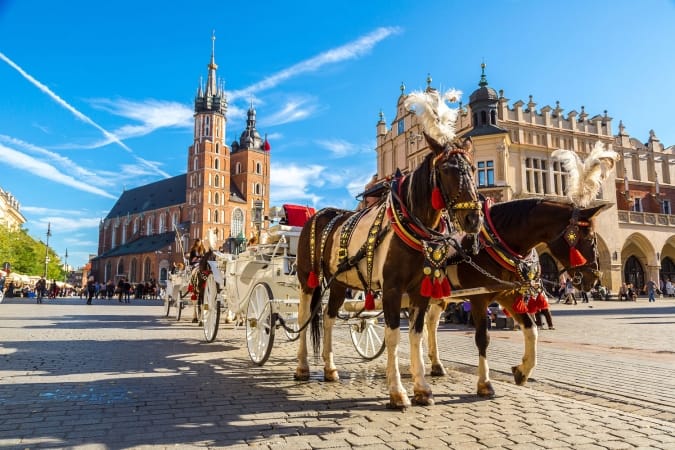
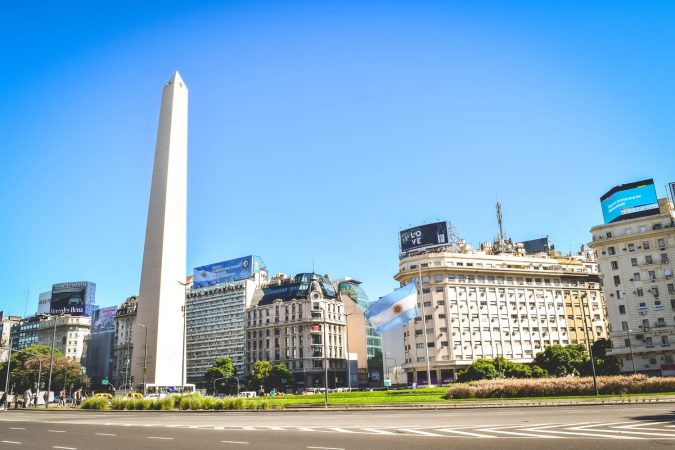

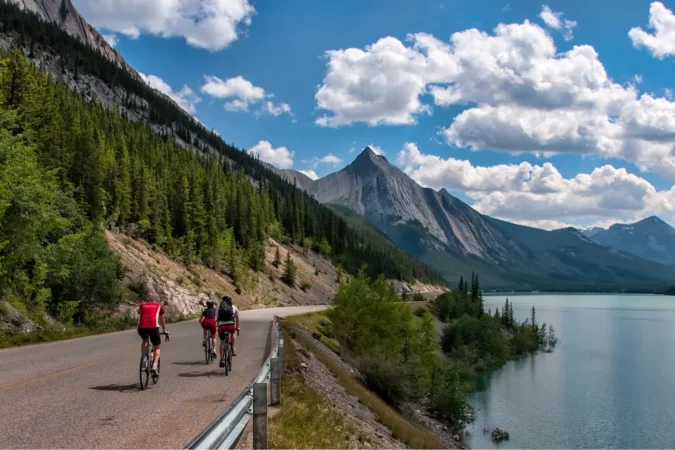
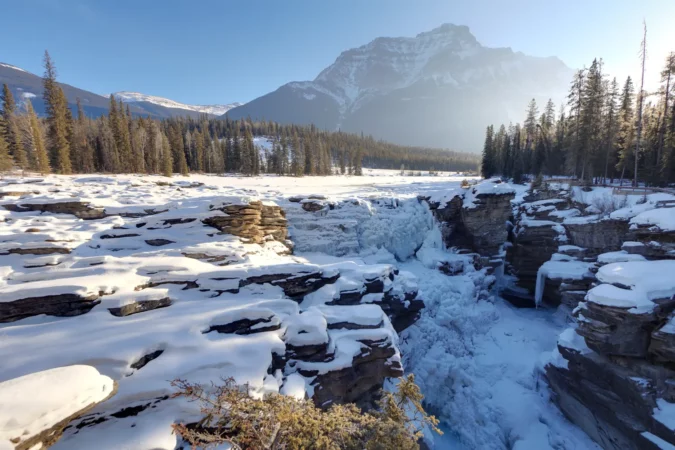
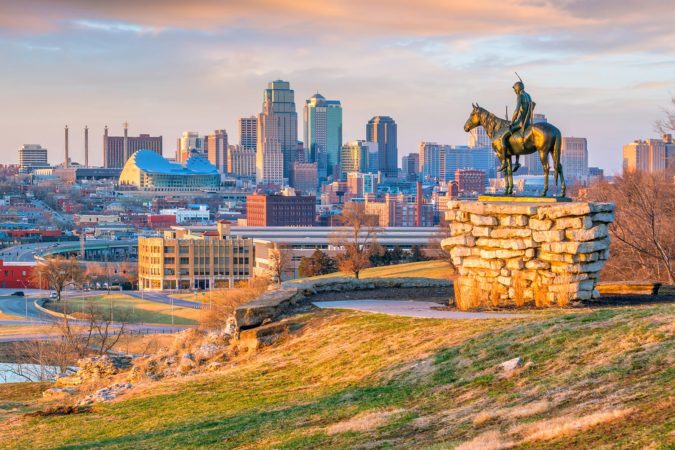
Comments